Churches of the past often had a grandiose stunning architecture. Contemporary religious structures, however, do not have that dominant identity, with architects finding more unexpected and minilmalist ways to express spirituality.
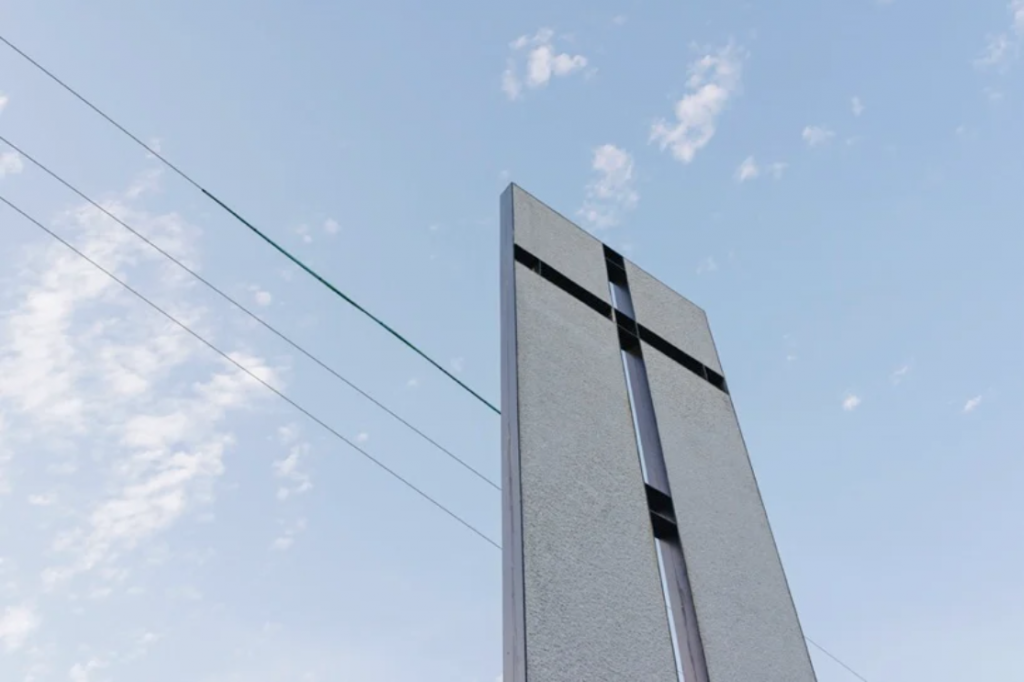
Mexican architecture studio Cabrera Arqs has chosen not to impose a dominant religious landmark on the area in the Yucatán peninsula and designed an underground space that blends in within the site. Named Chapel of the Earth, the structure aims to be ecumenical, reaching out to the whole community, which consists of members with various religious beliefs.
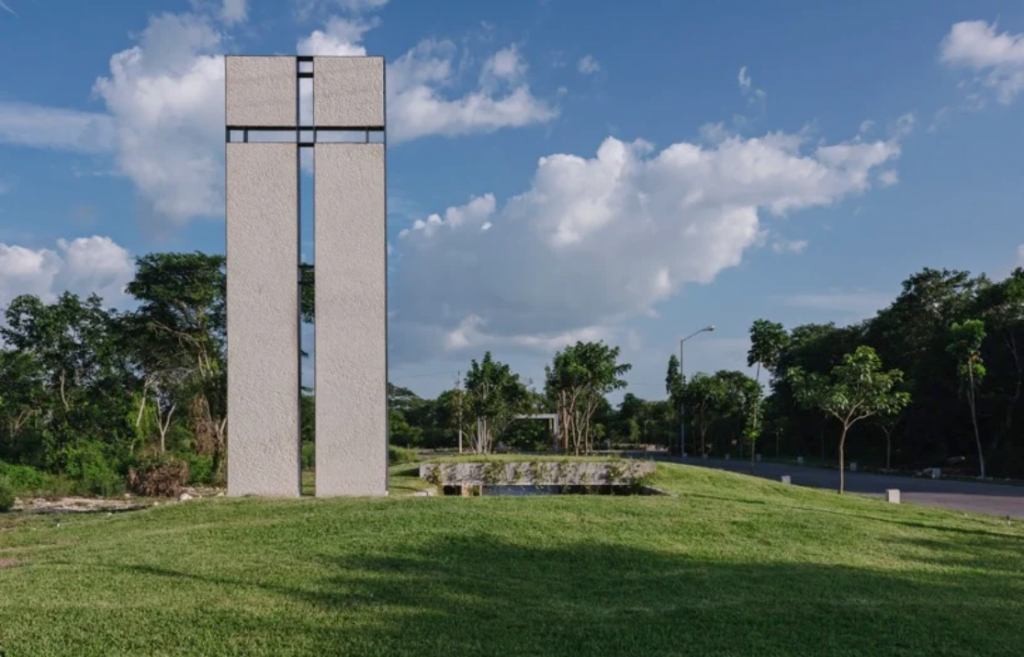
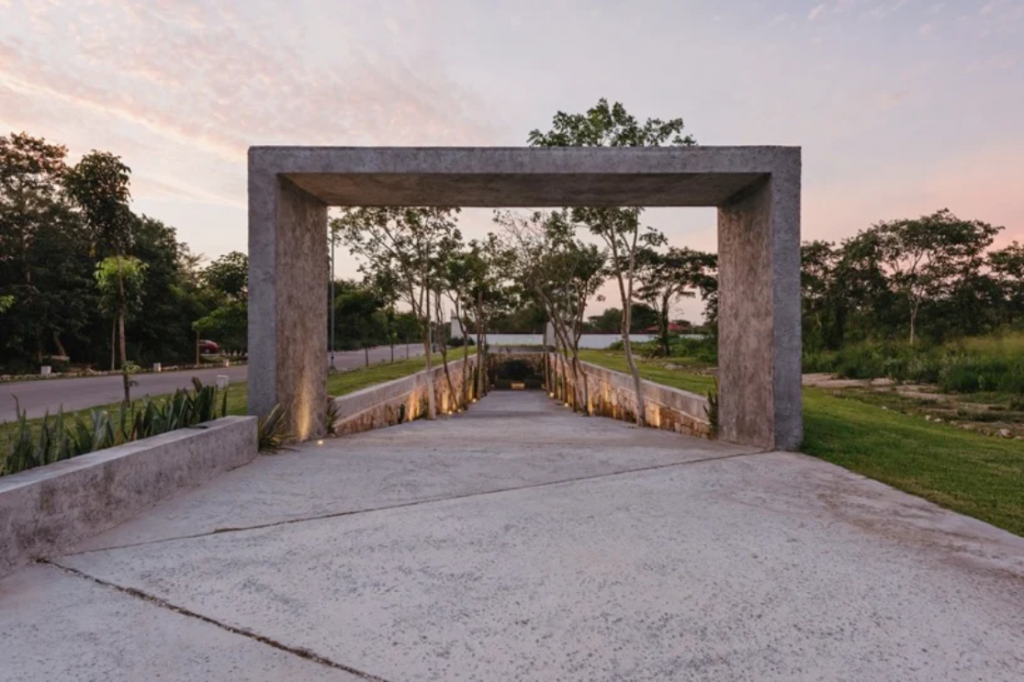
Chapel of the Earth by Cabrera Arqs (also header image)
From afar, the chapel is identified by the large cross pierced in precast concrete slabs. The journey to the chapel begins with a concrete structure framing a long passage on a not very steep slope. This frame of the entrance serves as a reinterpretation of a transitional place where the visitor starts to detach from the outside environment entering the place for prayer and contemplation. The path leads deep into the earth, to the chapel that comprises a concrete slab formed by semicircular vaults, which makes a conceptual reference to the churches and other colonial buildings of the area.
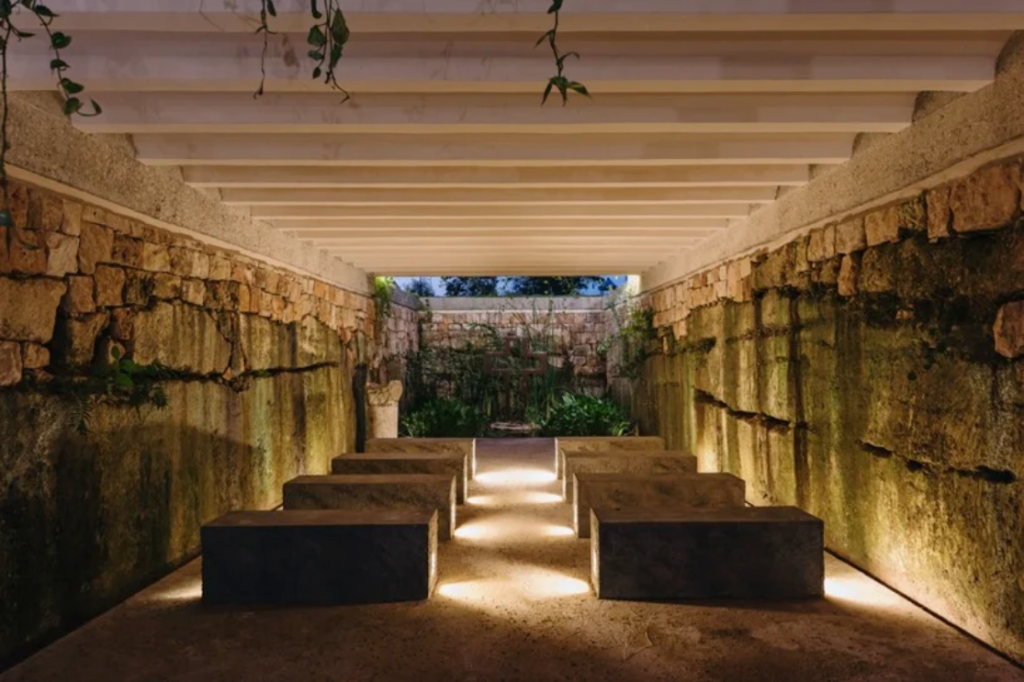
Chapel of the Earth by Cabrera Arqs
The altar behind two rows of benches seems to be the end of a cavern with an open vault, creating a window to heaven. The materials used for the “interior” are intentionally rustic, as if seeking a close relationship with the surrounding nature. Paying homage to the many cenotes that can be found in the region, thanks to the particular subsoil of the peninsula, a body of water is included into the programme. This element intensifies the feeling of isolation and encourages self-reflection.
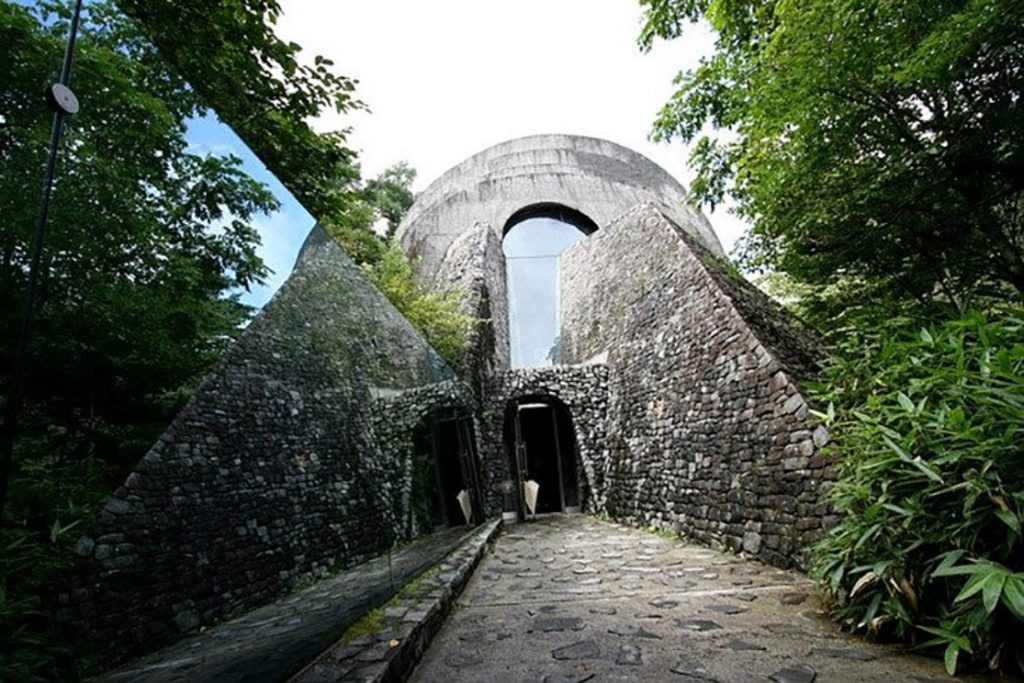
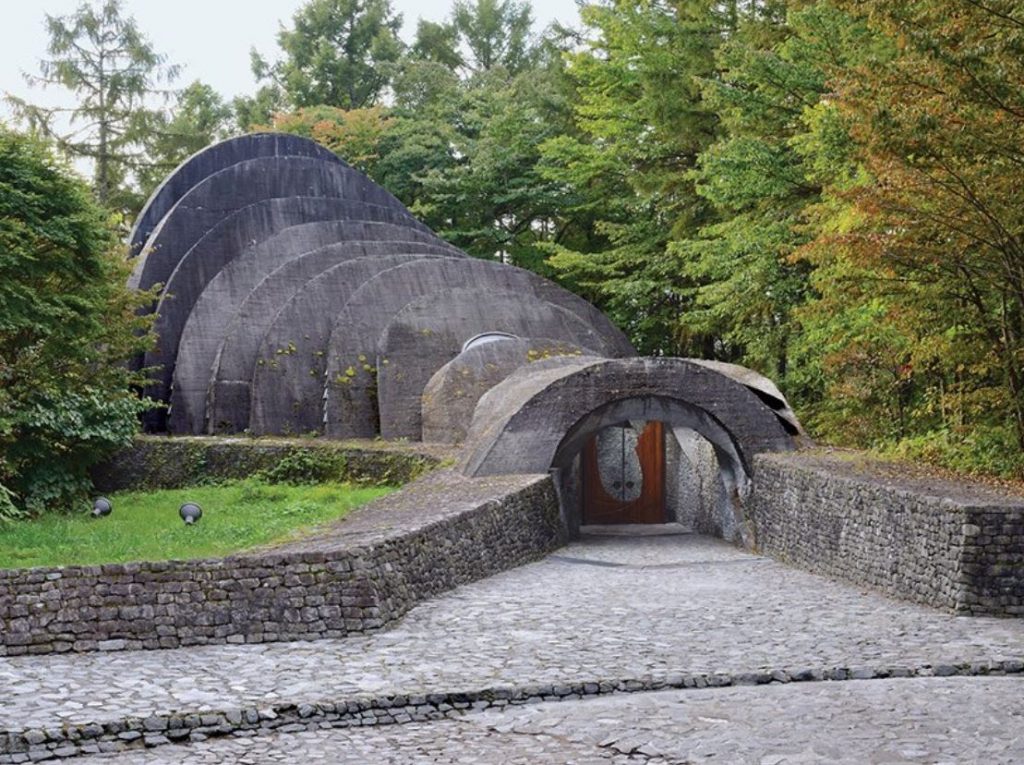
Hoshino stone church by Kendrick Bangs Kellogg (via)
The Chapel of the Earth concept makes one recall Uchimura Kanzo Memorial stone church (aslo known as the Hoshino stone church) in Japan. Completed back in 1988 by American architect Kendrick Bangs Kellogg, the organic chapel is integrated into the heavily forested landscape and is experienced not as a standalone structure but as part of a linear journey through the site.
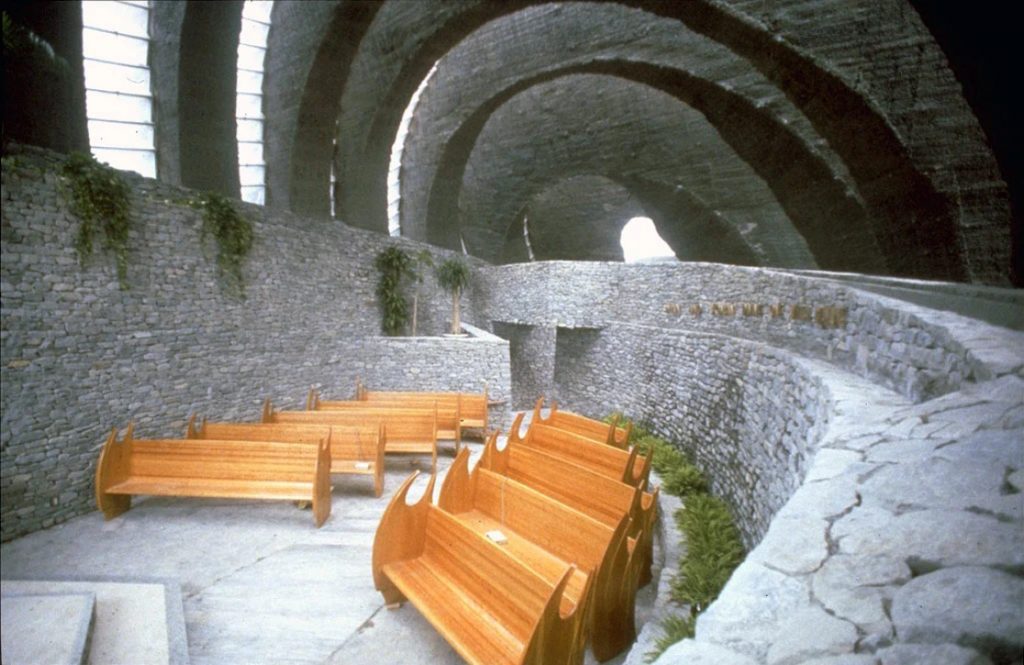
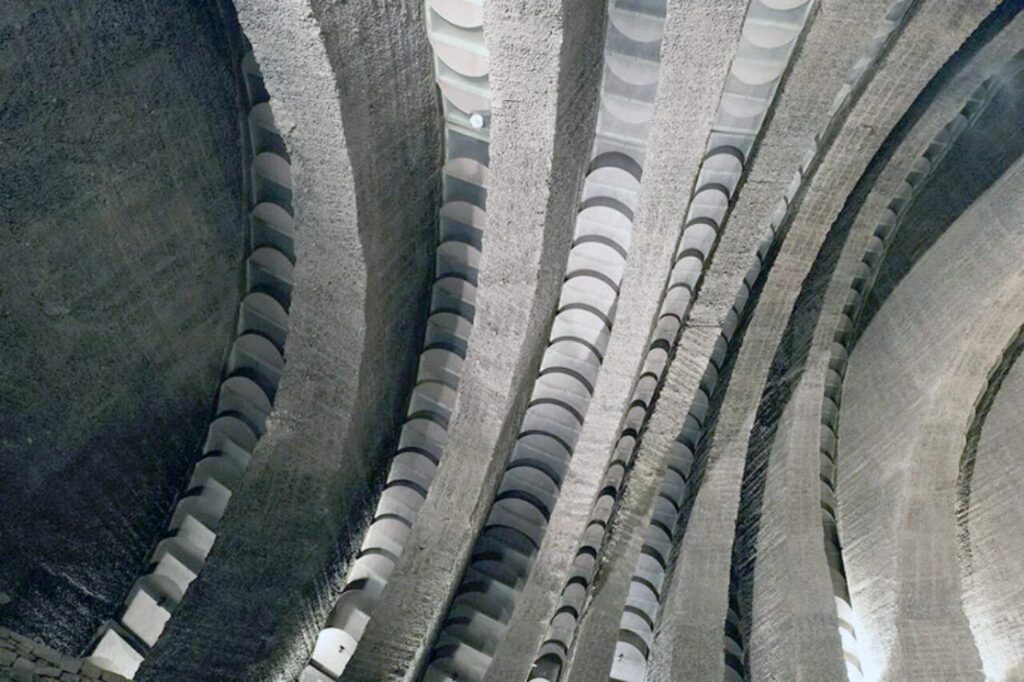
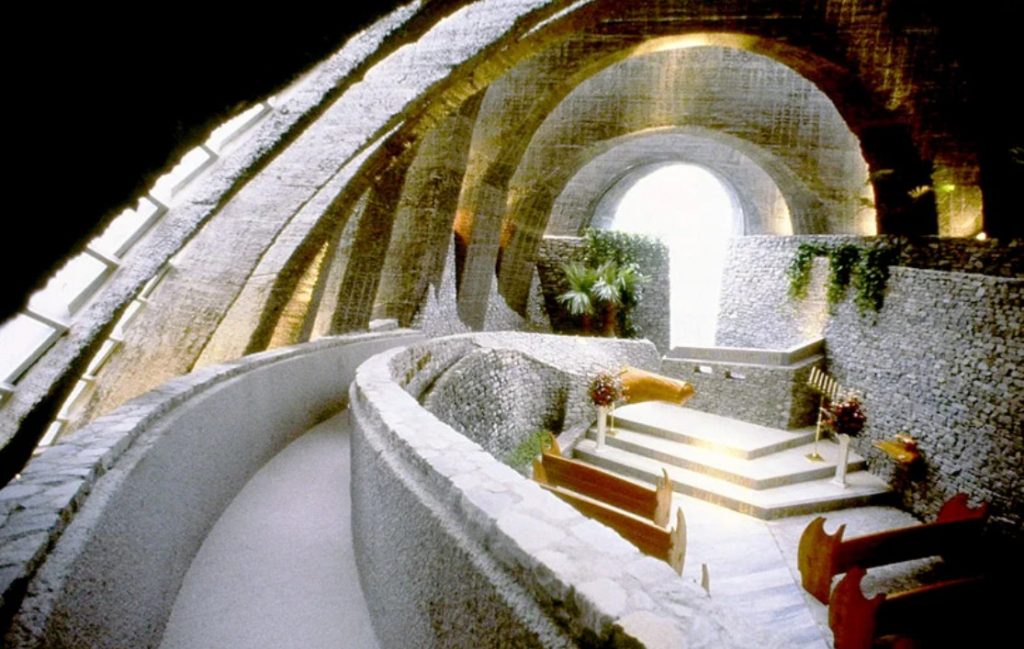
Hoshino stone church by Kendrick Bangs Kellogg (via)
The chapel’s foundation made from local stone supports slanted concrete semi-circular arches gradually growing in radius to eventually form an interior hall. These “rings” feature obscured glass skylights designed to diffuse constant natural light throughout the day. The material palette that includes stone and concrete, combined with natural light and lush vegetation makes the interior of the space feel like an ancient sanctuary. Wooden elements, such as custom-made doors, pews and fixtures add a touch of warmth to this religious structure, which is today primarily used for weddings.
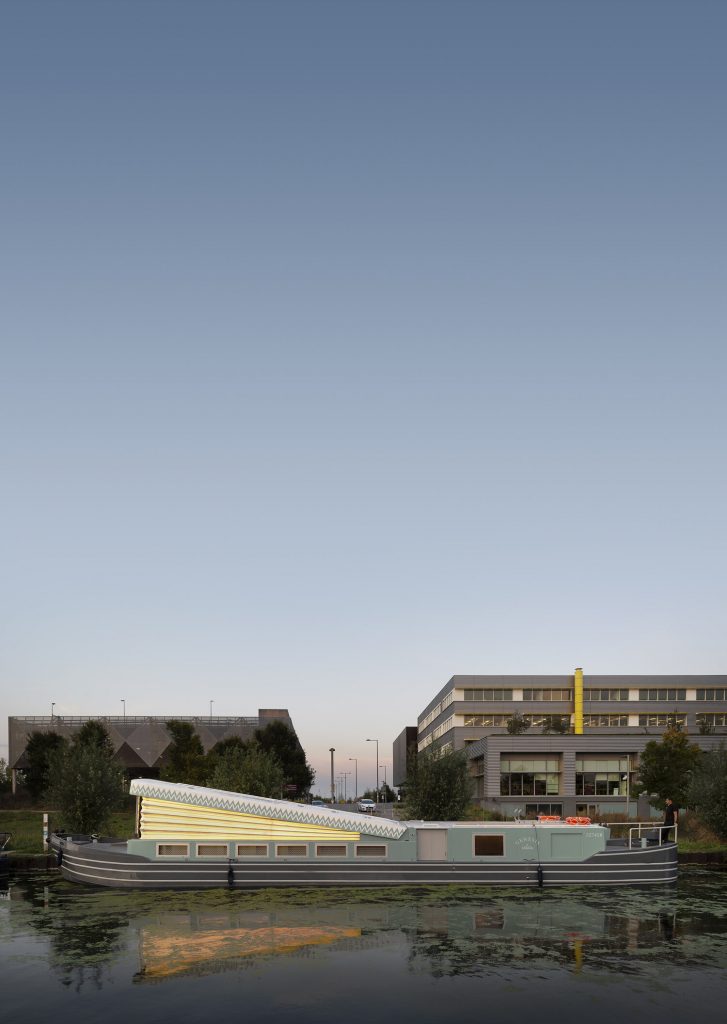
Floating church by Denizen Works
Quite different from these chapels integrated into the landscape is Genesis, a floating church designed by London-based practice Denizen Works. Commissioned by the Diocese of London, this wide-beam narrowboat is set to serve not only as a church but also as a flexible and mobile hub for the St Columba East London community for the next three to five years, before moving further to reach other canalside communities.
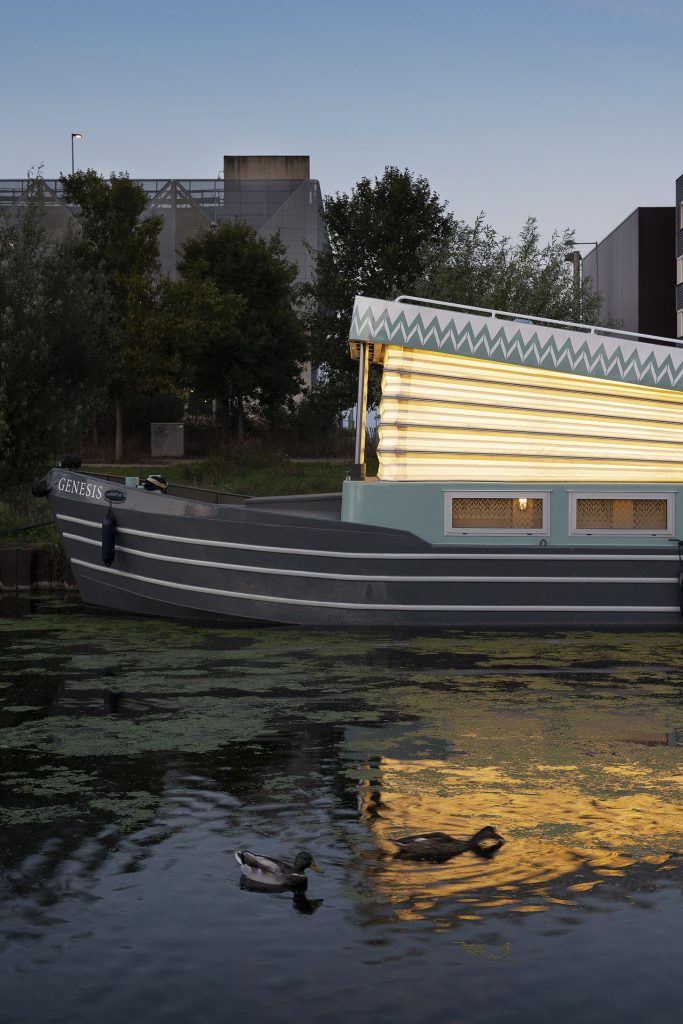
Floating church by Denizen Works
Christened Genesis after the first book of the Bible, the barge is crowned with an innovative kinetic roof inspired by organ bellows. Crafted from concertinaed, translucent sailcloth, the pop-up roof is lined with LED lights, powered by hydraulic rams and operated by the touch of a button. When fully raised, the roof will transform the barge from compact and low-lying, allowing it to pass beneath bridges, into an illuminated beacon designed to capture attention and attract footfall to the mission.
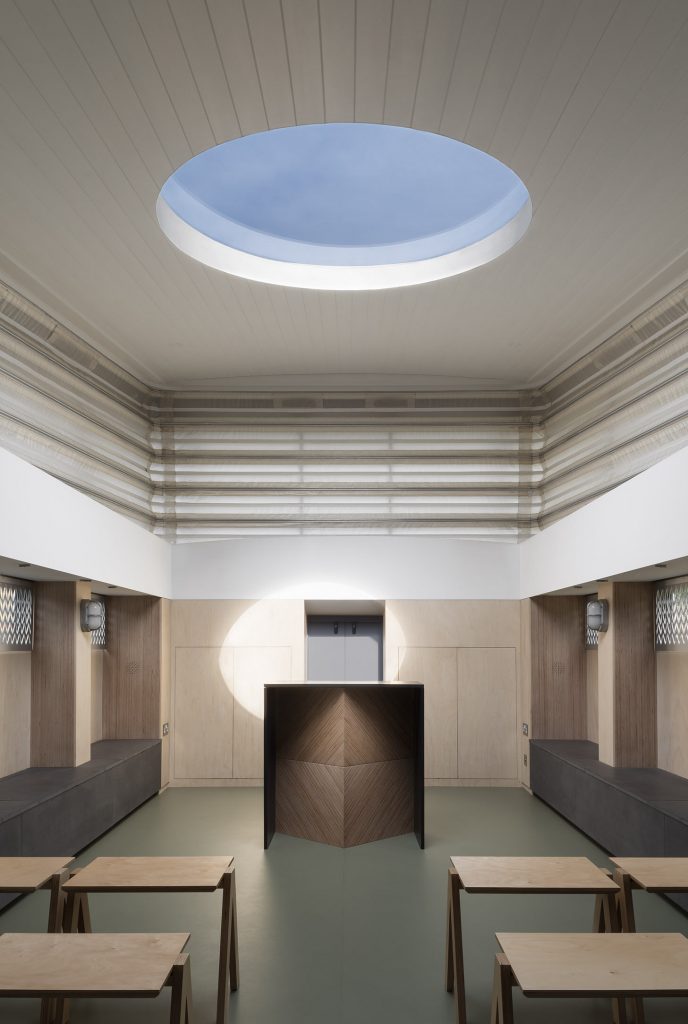
Floating church by Denizen Works
The sail stitching used on the bellows has been applied as a motif throughout the design and through a number of interior details, including aluminum screens on the windows, tiling in the kitchen and even the legs of the custom-designed plywood furniture. The elegant and seamless interior of light plywood walls also includes a custom designed altar that can be easily folded down into a flat pack for easy storage when not in use.
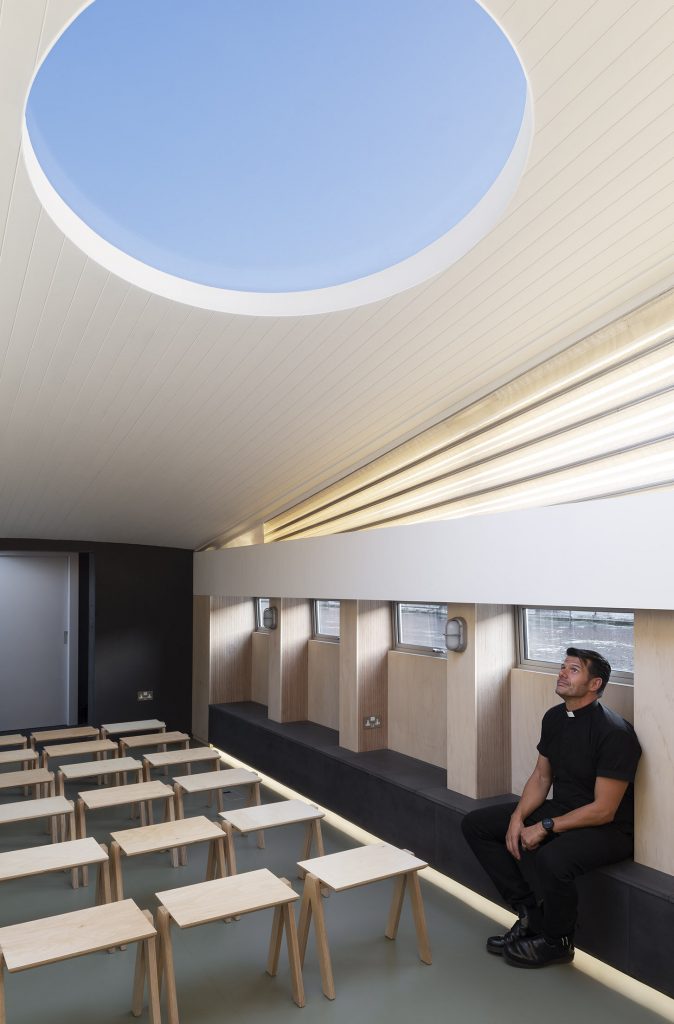
Floating church by Denizen Works
Apart from serving as a place of worship, the barge features an adaptable interior to accommodate a wide range of community activities and services, including parent and toddler groups, pilates classes and art classes, interfaith celebrations, lunch and supper clubs, live music, employment training, support workshops and counselling.